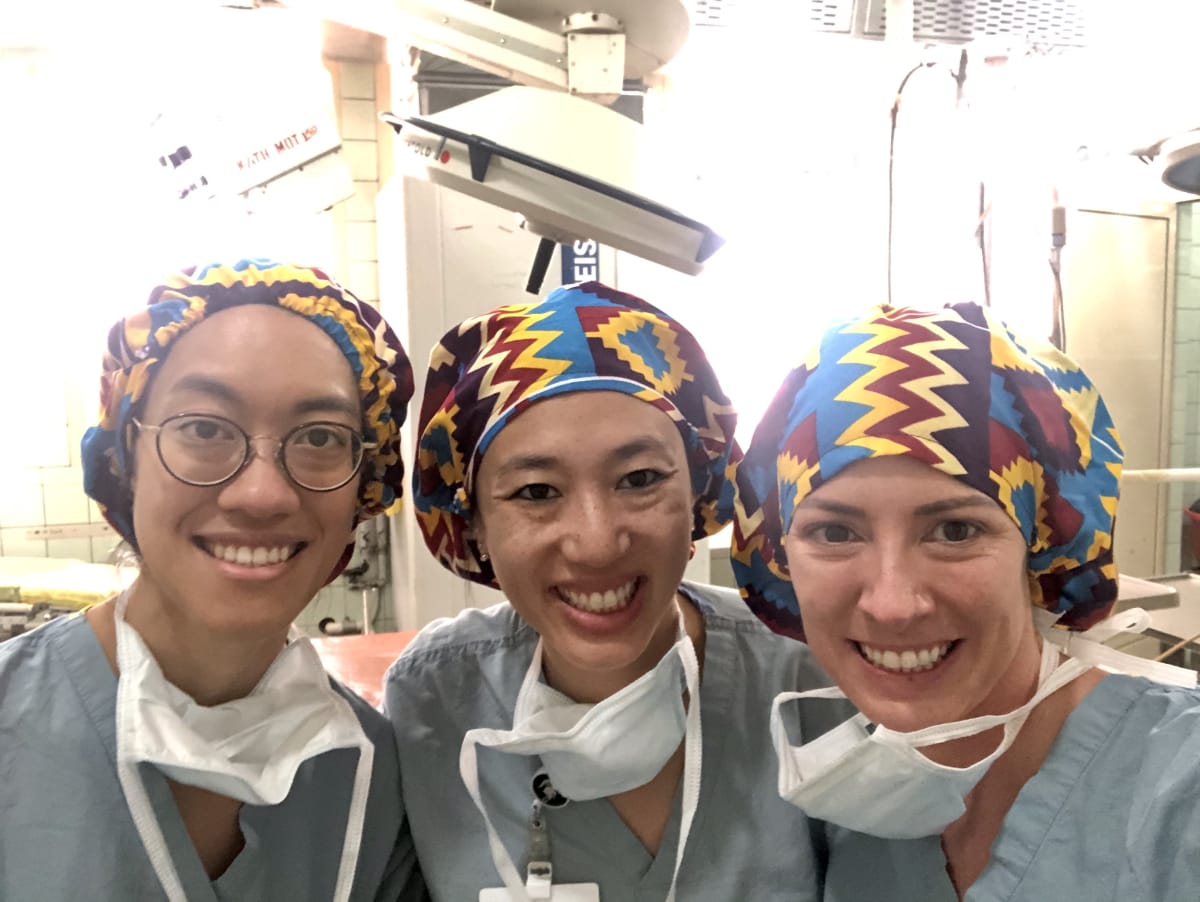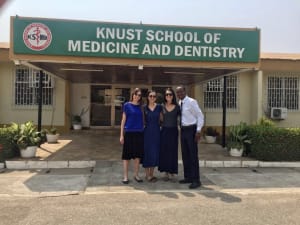I am planning to travel to Komfo Anokye Teaching Hospital (KATH) in Kumasi, Ghana with a group of Northwestern anesthesiologists through Health Volunteers Overseas (HVO). KATH is one of only two teaching hospitals in Ghana where anesthesiologist and other healthcare providers are trained. In an area where resources are limited and pain medications are scarce, regional anesthesia may be a safe alternative for anesthesia and analgesia. We are planning to help teach and incorporate regional anesthesia into their daily practice through lectures and clinical experiences. Our goal is to help teach various nerve block techniques so that the anesthesiologists there are able to provide safe and adequate care for their patients. Furthermore, we will collaborate and mentor staff and students on projects aimed at patient safety and outcomes, efficiency, and utilization of resources that are available.
KATH provides care to an underserved population in this region of Ghana. Our goal is to help educate and improve the knowledge and skills necessary to perform regional anesthesia. This will allow anesthesiologist to offer a safe, feasible, and effective method of anesthesia and analgesia for their patients. In addition, we hope that once anesthesiologists are comfortable with various procedures, they are able to educate other healthcare providers. Patients would also benefit from this project since regional procedures could provide the primary anesthetic in a location where many may encounter malfunctioned ventilators and monitors with limited medication and oxygen supplies. In addition, nerve blocks can also provide adequate pain relief following surgery improving quality of care, satisfaction, and time to recovery.
I expect that the anesthesiologists and healthcare providers will gain knowledge and an improved skill set to be able to provide regional anesthesia, both landmark techniques and ultrasound guided blocks, for their patients. I believe that it is very beneficial to be able to provide this type of anesthesia which may have lower costs while being an alternative for those undergoing surgery with significant co-morbidities. In addition to being the primary anesthetic, regional anesthesia can also improve postoperative pain control by providing an effective, opioid-sparing alternative. KATH is associated with multiple organizations such as HVO therefore providing future opportunities for continued education and improvement in clinical skills.










We spent our time at Komfo Anokye Teaching Hospital in Kumasi, Ghana. This is the second largest hospital in Ghana and the tertiary center in the region. I spent my time with anesthesia department and learned about the medical training structure in Ghana. There are medical officers who are equivalent to interns as well as residents who were training in anesthesiology. Following residency, physicians are then either specialist or fellows, focusing on a subspecialty of anesthesia. Lastly, we interacted with the consultants who are the senior anesthesiologists. It was interesting to learn about the difference in training and a great opportunity to work with the anesthesiologist at various levels.
Our primary goal was teaching regional anesthesiology, which involves performing nerve blocks to alleviate pain. We spent time with one of their fellows performing erector spinae plane blocks for mastectomy patients. This block was able to provide postoperative pain control for patient receiving chest and abdominal surgery. In addition, given the location in which it is performed, it is a relatively safe procedure and not technically challenging. This makes it a valuable nerve block for anesthesiologists in training. It was also nice working with the team and determining the optimal position to safely and efficiently perform the procedure based on our own experiences. We saw good pain relief in our patients and we hope they will continue to perform this nerve block to help with postoperative pain. In addition to the erector spinae plane block, we spent time teaching the quadratus lumborum block. This nerve block has potential to provide superior coverage compared to the TAP block and can be beneficial for patients undergoing abdominal surgery or cesarean deliveries. Especially in an area where epidurals are uncommon, which typically long acting pain medications can be given, this is a good alternative for pain control.
In addition, we gave lectures about various anesthesia topics to the department. We also spent time observing the preoperative clinic where they evaluated patients prior to surgery. We did intraoperative teaching and had discussions based on various cases that were occurring. This is always interesting to discuss different ways of management and learn from each other. Overall, I was impressed with the anesthesia department and their dedication to their patients. They provided excellent care for their patients given the resources they had and I also learned a lot from my time there. But like every place, there are areas in need of improvement that we observed. Now that we have established a relationship with the hospital and department, I hope this will open the door to further collaborations whether in the field of anesthesiology or other specialties.